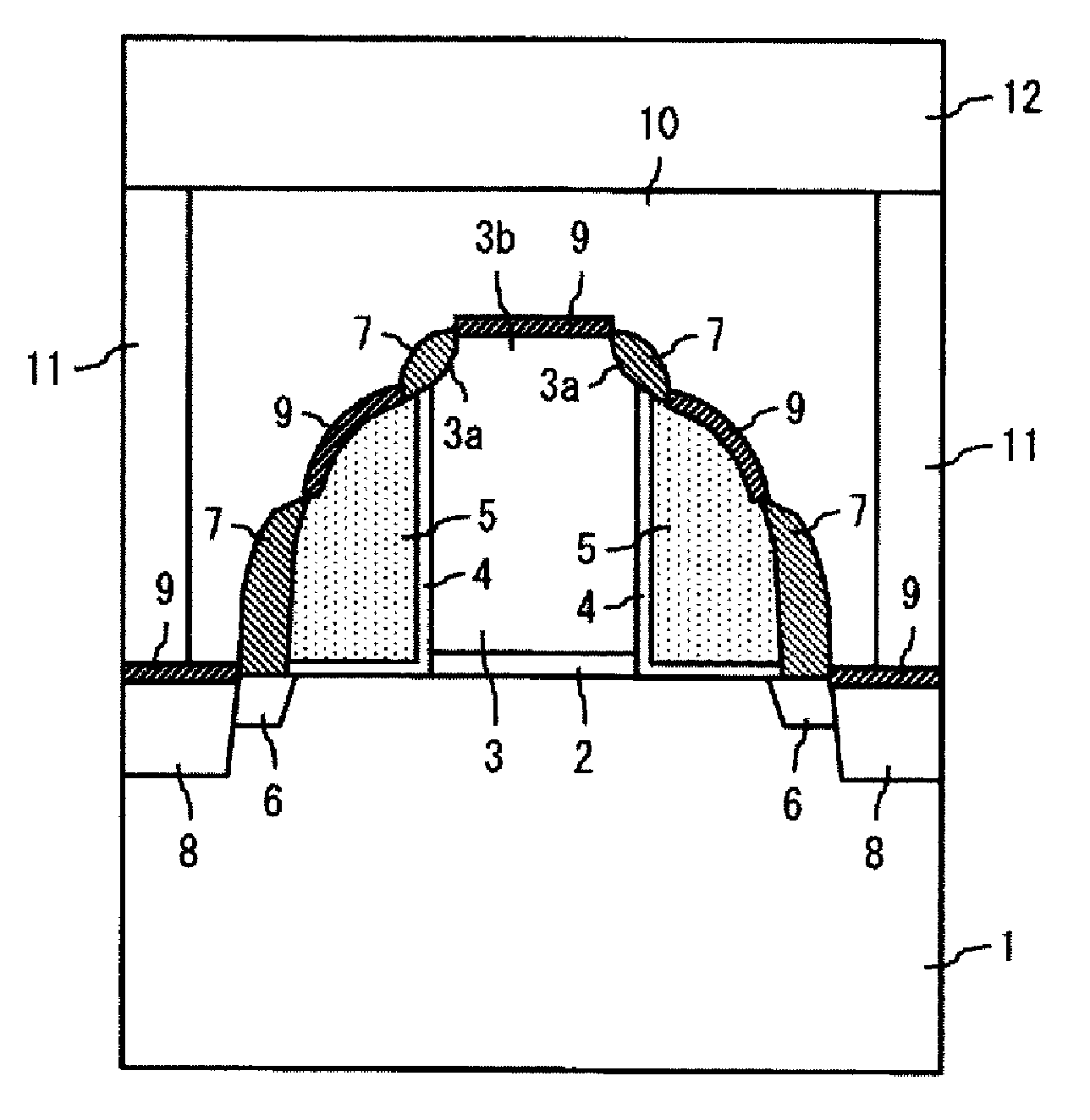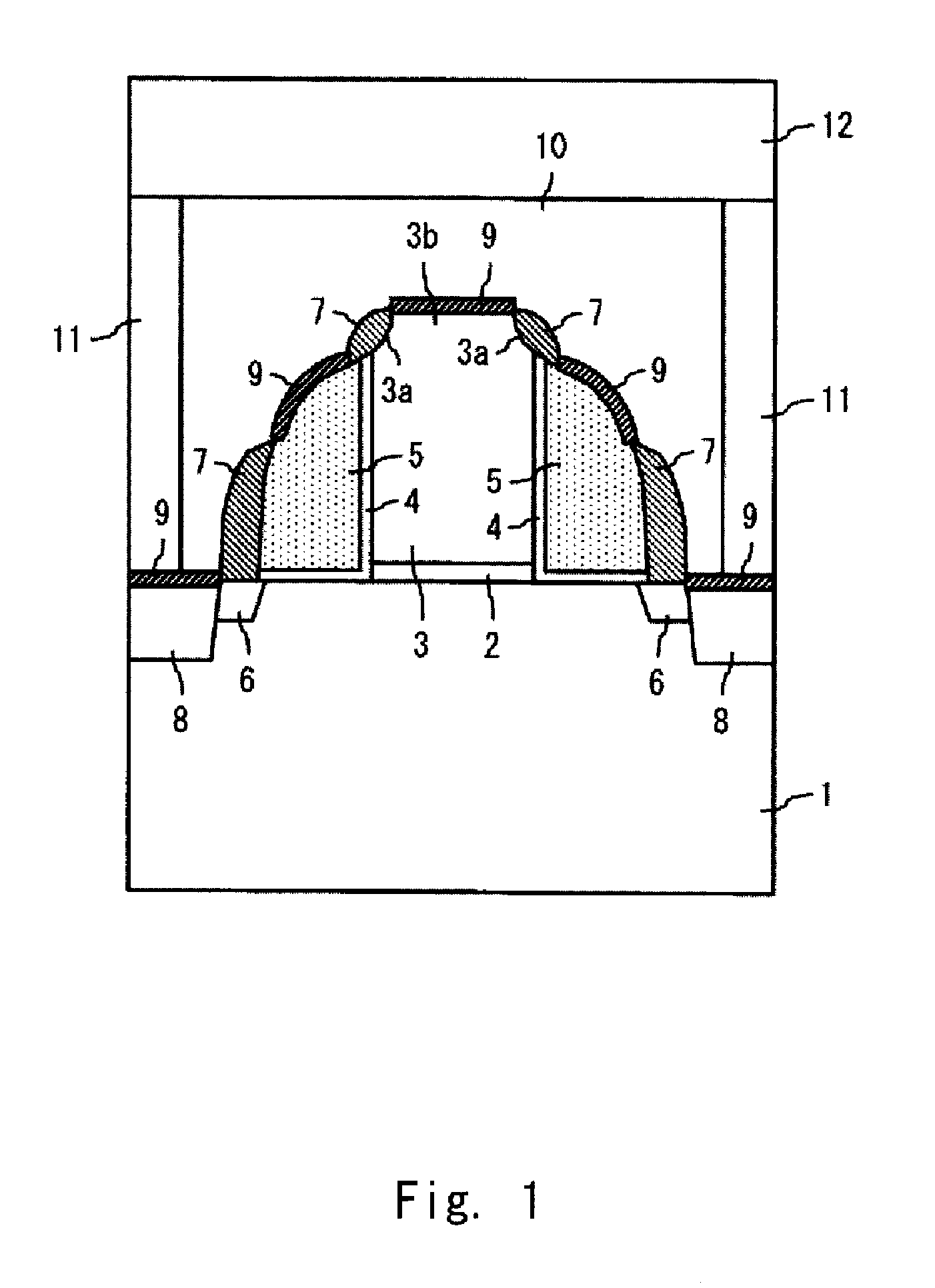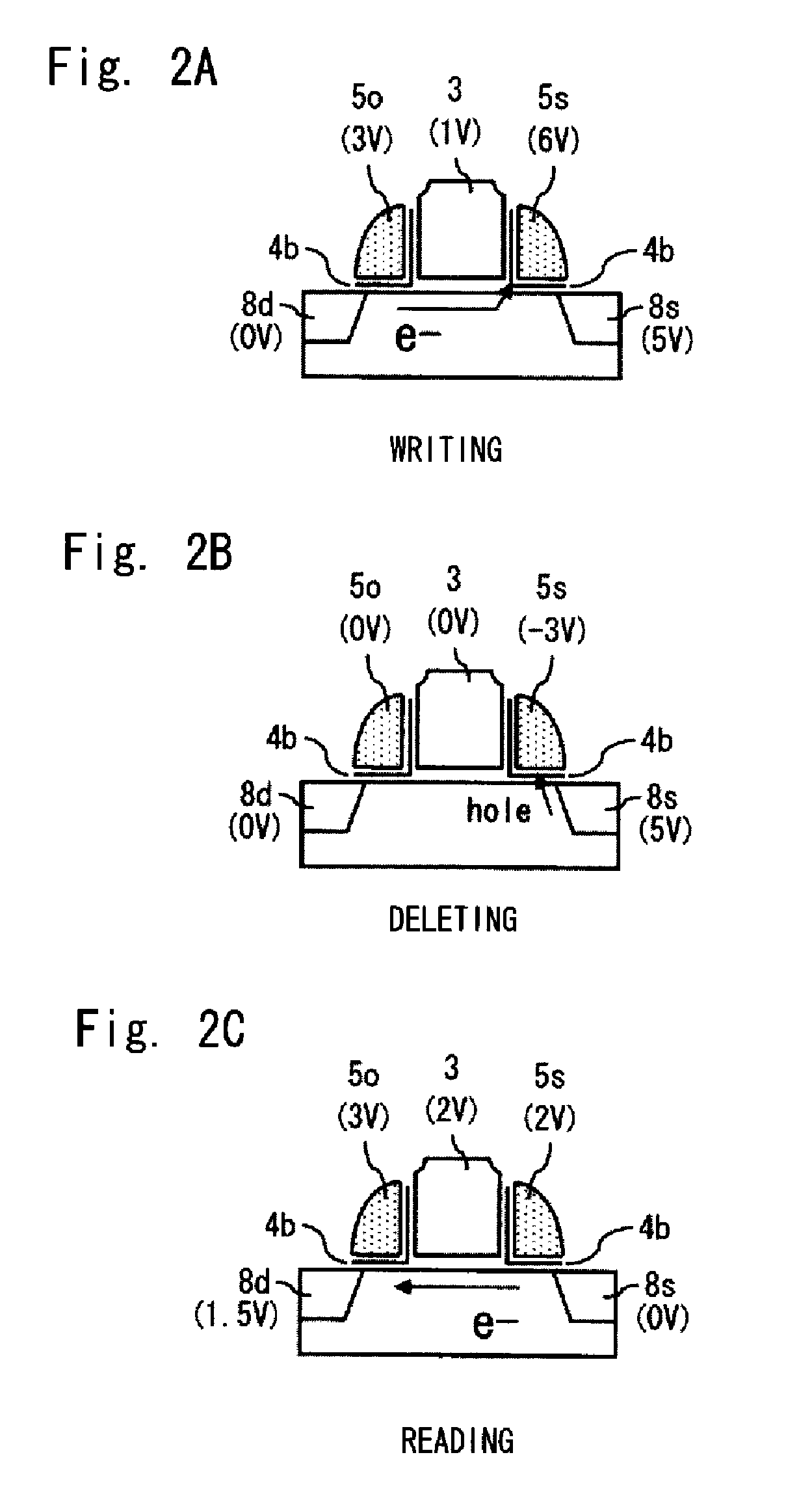Nonvolatile semiconductor memory device and a manufacturing method thereof
a manufacturing method and semiconductor technology, applied in the direction of semiconductor devices, electrical devices, transistors, etc., can solve the problems of reducing long-term reliability, reducing yield, and shortening of silicide, and achieve the effect of preventing the shortening
- Summary
- Abstract
- Description
- Claims
- Application Information
AI Technical Summary
Benefits of technology
Problems solved by technology
Method used
Image
Examples
first exemplary embodiment
[0023]The configuration of a nonvolatile semiconductor memory device according to the first exemplary embodiment is described with reference to FIG. 1. FIG. 1 is a cross-sectional view illustrating a configuration of a nonvolatile semiconductor memory device according to the first exemplary embodiment. The nonvolatile semiconductor memory device according to this exemplary embodiment is a memory having a twin MONOS structure which a control gate 5 is formed both sides of a word gate 3.
[0024]In FIG. 1, a pair of diffusion layer 8 is provided in a main surface of a semiconductor substrate 1 as a source / drain region. The diffusion layer 8 is an n-type impurity region including such as arsenic and is formed in the surface region of the semiconductor substrate 1. A region between the pair of diffusion layer 8 is a channel region in which a channel is formed. LDD (Lightly Doped Drain) regions 6 which include an impurity at lower density than the diffusion layer 8 are provided between the ...
second exemplary embodiment
[0064]The configuration of a nonvolatile semiconductor memory device according to the second exemplary embodiment is described with reference to FIG. 4. FIG. 4 is a cross-sectional view illustrating a configuration of a nonvolatile semiconductor memory device according to the second exemplary embodiment. While, in the first exemplary embodiment, the present invention has been applied to the nonvolatile semiconductor memory device having the twin MONOS structure, in this exemplary embodiment, the example in which the present invention is applied to the nonvolatile semiconductor memory device having the structure in which the control gate 5 is only provided on one side of the word gate 3 will be described.
[0065]In FIG. 4, the word gate 3 which is the same as that in the first exemplary embodiment is formed in this exemplary embodiment. Specifically, the word gate 3 having the projecting part 3b which projects in upper direction with a certain width is formed. In this exemplary embodim...
PUM
 Login to View More
Login to View More Abstract
Description
Claims
Application Information
 Login to View More
Login to View More - R&D
- Intellectual Property
- Life Sciences
- Materials
- Tech Scout
- Unparalleled Data Quality
- Higher Quality Content
- 60% Fewer Hallucinations
Browse by: Latest US Patents, China's latest patents, Technical Efficacy Thesaurus, Application Domain, Technology Topic, Popular Technical Reports.
© 2025 PatSnap. All rights reserved.Legal|Privacy policy|Modern Slavery Act Transparency Statement|Sitemap|About US| Contact US: help@patsnap.com



